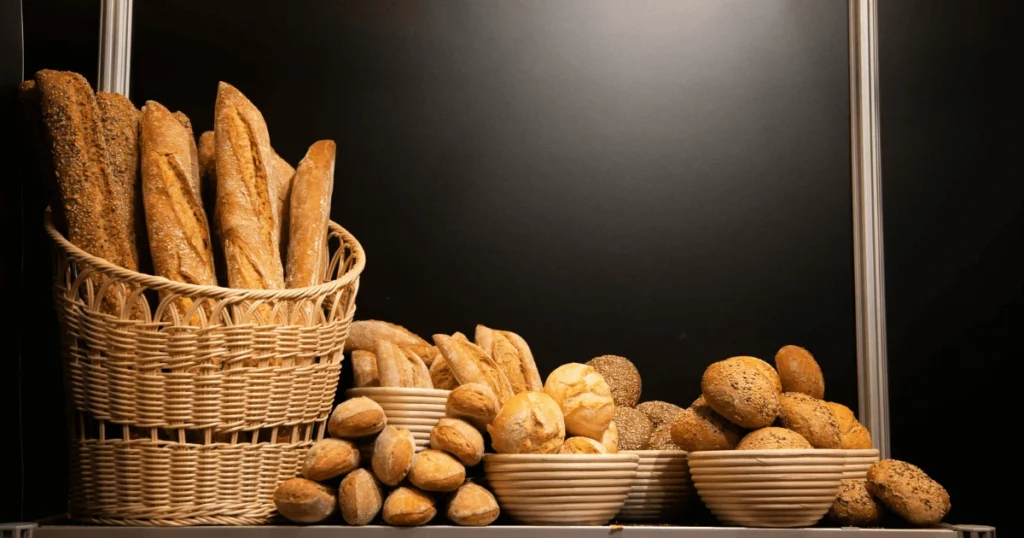Can Dogs Eat Bread? What Every Dog Owner Should Know Before Sharing a Slice
Table of Contents
Can Dogs Eat Bread? You’re mid-toast and your dog’s begging eyes are laser-locked on the crust. Harmless snack or hidden danger?
The short answer? Yes, dogs can eat plain bread in small amounts. But before you start tossing crusts like treats, there’s more to the story. Not all bread is created equal—some types are perfectly safe, while others can be downright dangerous for your pup.
In this guide, we’ll break down everything you need to know: the safest kinds of bread to share, ingredients to avoid at all costs, and smart feeding practices every pet parent should follow. Wondering is bread good for dogs? Spoiler: not really—but let’s get into the details.
Is Bread Good for Dogs?
Bread might be a staple in your kitchen, but that doesn’t make it a healthy choice for your dog. While plain bread isn’t toxic, it offers almost zero nutritional value. Think of it as empty calories—high in carbohydrates, low in everything else.
Dogs on a complete and balanced diet don’t need bread. In fact, feeding it too often can lead to unwanted weight gain, blood sugar spikes, or digestive issues. So, is bread good for dogs? Not exactly. It’s safe in moderation, but far from essential.
The bottom line: your dog might enjoy a bite or two of plain, baked bread—but it should always be an occasional treat, not a daily habit.
Safe or Sorry: What Kinds of Bread Can Dogs Eat?
So, can dogs eat bread every day? That’s a solid no. Even if it’s plain and safe, bread should only be a once-in-a-while treat. Feeding it daily can pile on unnecessary carbs, leading to weight gain, bloating, and even blood sugar issues—especially for dogs that are less active, overweight, or diabetic.
Let’s break down which breads are safe, and which are a hard pass:
✅ Breads That Are Safe (In Moderation)
- Plain white bread
- Plain wholemeal or brown bread
These are safe only if they’re fully baked and free from added ingredients like butter, sugar, or toppings. Even then, serve tiny amounts—think bite-size, not a whole slice.
❌ Breads You Should Never Feed

Can dogs eat bread with seeds?
It’s risky. While a few seeds like flax or sunflower might not be toxic, many seeded breads contain harmful or fatty seeds like poppy or chia, which can cause digestive upset or toxicity in dogs. Plus, seeds are often paired with nuts, which are another no-go.
Avoid breads that contain:
- Raisins or dried fruits
- Garlic or onion (including powders)
- Nuts (especially macadamia, which is toxic)
- Artificial sweeteners like xylitol
- Chocolate or cocoa
- Raw dough (we’ll get to that next)
One more thing—multigrain or artisanal breads often sneak in a mix of seeds, spices, or sweeteners, so always read the label or skip it entirely.
Smart Tips for Feeding Dogs Bread
If you’re going to treat your dog to bread, do it the right way. Here’s how to keep it safe:
Portion Control Is Everything
Only offer small, bite-sized pieces—no full slices, no toast stacks, no crust buffets. Bread is a filler food and shouldn’t replace your dog’s normal diet.
✅ Go Plain and Simple
- No butter
- No jam
- No cream cheese
- No sprinkles of cinnamon sugar
Bread should be just bread—plain, baked, and boring (from a human perspective, at least).
Skip It for Certain Dogs
Avoid bread altogether if your dog:
- Is diabetic
- Has food allergies
- Struggles with weight
- Is on a vet-prescribed diet
Treat, Don’t Repeat
Even with safe bread, don’t make it a routine. Once in a while? Fine. Every day? Nope. Your dog’s body thrives on protein, fiber, and healthy fats—not refined carbs.
Red Flags: When Bread Becomes Dangerous

Even if your dog has snacked on plain bread before without issues, things can turn serious fast if they get into the wrong kind.
Here’s what to watch for if your dog eats a large amount of bread or any bread with unsafe ingredients:
🚨 Symptoms of Bread-Related Problems
- Vomiting or diarrhea – Early signs their stomach didn’t agree with it.
- Lethargy or weakness – Could point to toxin exposure or digestive blockage.
- Abdominal bloating – Especially dangerous with raw dough; can lead to gastric dilation-volvulus (bloat), a life-threatening condition.
- Seizures or tremors – Rare, but possible if your dog ingested toxic ingredients like xylitol, raisins, or certain nuts.
- Unusual behavior – Restlessness, whining, pacing, or hiding can all be clues that something’s wrong.
☎️ What To Do
If your dog eats anything off the “unsafe bread” list—or shows any of the symptoms above—call your vet immediately. Early action can prevent serious complications. And if you suspect your dog ate raw bread dough, don’t wait—this is an emergency.
Bread Safety Cheat Sheet 📝
Need a quick breakdown? Here’s your easy-to-scan table of common bread types and whether they’re safe for dogs:
| Bread Type | Safe for Dogs? | Why / Why Not |
|---|---|---|
| Plain white/brown bread | ✅ Yes (in moderation) | No toppings or add-ins. Keep portions small. |
| Bread with raisins | ❌ No | Raisins are highly toxic—even in small amounts. |
| Garlic/onion bread | ❌ No | Both garlic and onions (raw or powdered) are toxic to dogs. |
| Bread with seeds/nuts | ❌ No | Some seeds are toxic; nuts can cause digestive or neuro issues. |
| Raw bread dough | ❌ No | Expands in the stomach and can produce alcohol—very dangerous. |
Expert Sources & References
Not sure who to trust when it comes to your dog’s diet? These expert-backed resources helped shape this guide—and they’re worth bookmarking:
- Purina US: Can Dogs Eat Bread?
- James Wellbeloved: Can Dogs Eat Bread?
- LolaHemp: Safe vs. Unsafe Bread for Dogs
- American Kennel Club (AKC): Can Dogs Eat Bread?
- PetMD: Is Bread Safe for Dogs?
Reminder: Always consult your vet before introducing new foods to your dog’s diet—especially if your pup has health conditions or sensitivities.
FAQs: Is Bread Safe for Dogs?
Can dogs eat bread everyday?
No. Bread should only be an occasional treat. Feeding dogs bread daily can lead to weight gain and digestive issues.
Is bread good for dogs?
Not really. Bread is low in nutritional value and high in carbohydrates, offering little benefit to your dog’s diet.
Can dogs eat bread with seeds?
It’s best to avoid seeded bread. Some seeds are toxic to dogs, and others may cause digestive upset.
What happens if a dog eats raw bread dough?
Raw dough can expand in a dog’s stomach and produce alcohol, which may lead to bloating, poisoning, or even death. Seek emergency vet care.
What types of bread are toxic to dogs?
Avoid breads with raisins, garlic, onions, chocolate, xylitol, seeds, or nuts. These can be harmful or fatal to dogs.
Final Woof: Should You Share That Crust?
So, can dogs eat bread? Yes—but only the plain, boring kind, and only once in a while.
There’s no real benefit to adding bread to your dog’s diet, and there’s a lot of risk in sharing the wrong type. While that crust might seem innocent, ingredients like raisins, garlic, seeds, or even raw dough can be dangerous or even deadly.
Keep it simple: no toppings, no seeds, no daily treats. Just a bite or two on rare occasions is plenty.
Your dog deserves the best—and that means sticking to treats that truly serve their health, not just their taste buds. 🐶

